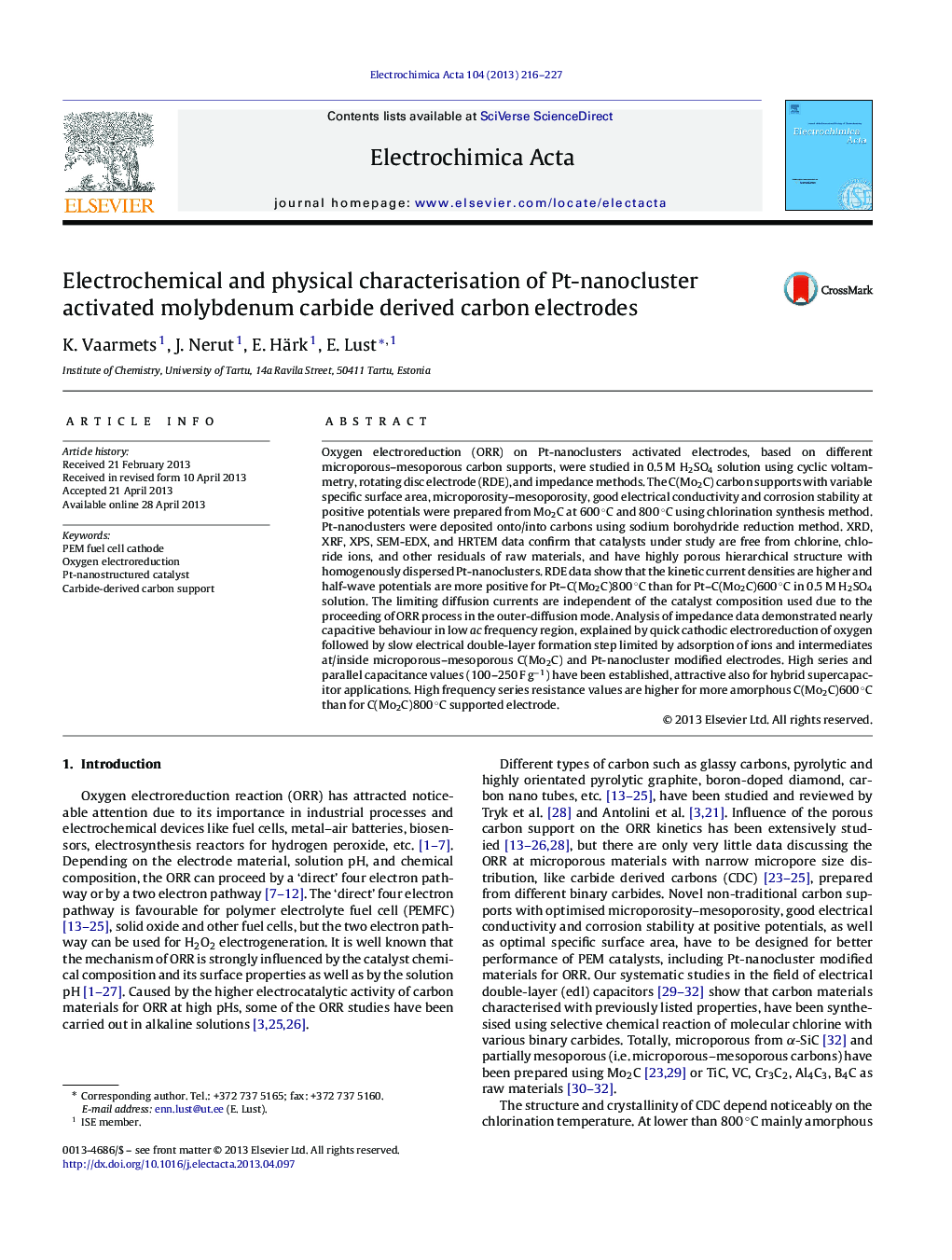| Article ID | Journal | Published Year | Pages | File Type |
|---|---|---|---|---|
| 6617800 | Electrochimica Acta | 2013 | 12 Pages |
Abstract
Oxygen electroreduction (ORR) on Pt-nanoclusters activated electrodes, based on different microporous-mesoporous carbon supports, were studied in 0.5 M H2SO4 solution using cyclic voltammetry, rotating disc electrode (RDE), and impedance methods. The C(Mo2C) carbon supports with variable specific surface area, microporosity-mesoporosity, good electrical conductivity and corrosion stability at positive potentials were prepared from Mo2C at 600 °C and 800 °C using chlorination synthesis method. Pt-nanoclusters were deposited onto/into carbons using sodium borohydride reduction method. XRD, XRF, XPS, SEM-EDX, and HRTEM data confirm that catalysts under study are free from chlorine, chloride ions, and other residuals of raw materials, and have highly porous hierarchical structure with homogenously dispersed Pt-nanoclusters. RDE data show that the kinetic current densities are higher and half-wave potentials are more positive for Pt-C(Mo2C)800 °C than for Pt-C(Mo2C)600 °C in 0.5 M H2SO4 solution. The limiting diffusion currents are independent of the catalyst composition used due to the proceeding of ORR process in the outer-diffusion mode. Analysis of impedance data demonstrated nearly capacitive behaviour in low ac frequency region, explained by quick cathodic electroreduction of oxygen followed by slow electrical double-layer formation step limited by adsorption of ions and intermediates at/inside microporous-mesoporous C(Mo2C) and Pt-nanocluster modified electrodes. High series and parallel capacitance values (100-250 F gâ1) have been established, attractive also for hybrid supercapacitor applications. High frequency series resistance values are higher for more amorphous C(Mo2C)600 °C than for C(Mo2C)800 °C supported electrode.
Related Topics
Physical Sciences and Engineering
Chemical Engineering
Chemical Engineering (General)
Authors
K. Vaarmets, J. Nerut, E. Härk, E. Lust,
